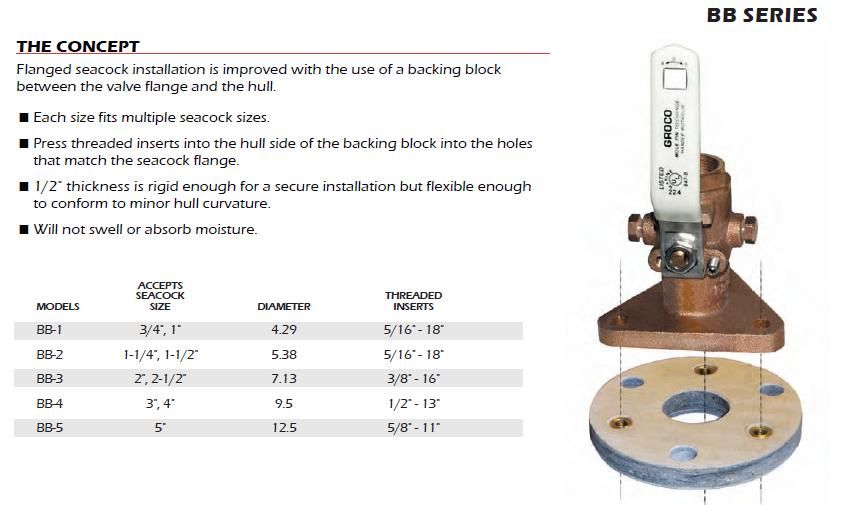Im just reading up on how to do this and came across this thread.
Installing A Seacock & Thru-Hull Fitting In A New Location Photo Gallery by Compass Marine How To at pbase.com
i just dont under stand one thing and that is bolting the seacock through the backing panel
some sites say to go throught the hull or just the backing plate
see image 5
i dont want to make more holes in my boat so does the machined screws just get countersunk on the back of the backing plate then epoxied in?
How thick does the backing plate have to be ?
Installing A Seacock & Thru-Hull Fitting In A New Location Photo Gallery by Compass Marine How To at pbase.com
i just dont under stand one thing and that is bolting the seacock through the backing panel
some sites say to go throught the hull or just the backing plate
see image 5
i dont want to make more holes in my boat so does the machined screws just get countersunk on the back of the backing plate then epoxied in?
How thick does the backing plate have to be ?


![IMG_1063[1].jpg](/d1/attachments/34/34785-9501032bcbb8158ce4746c3d7b4bf01f.jpg)



